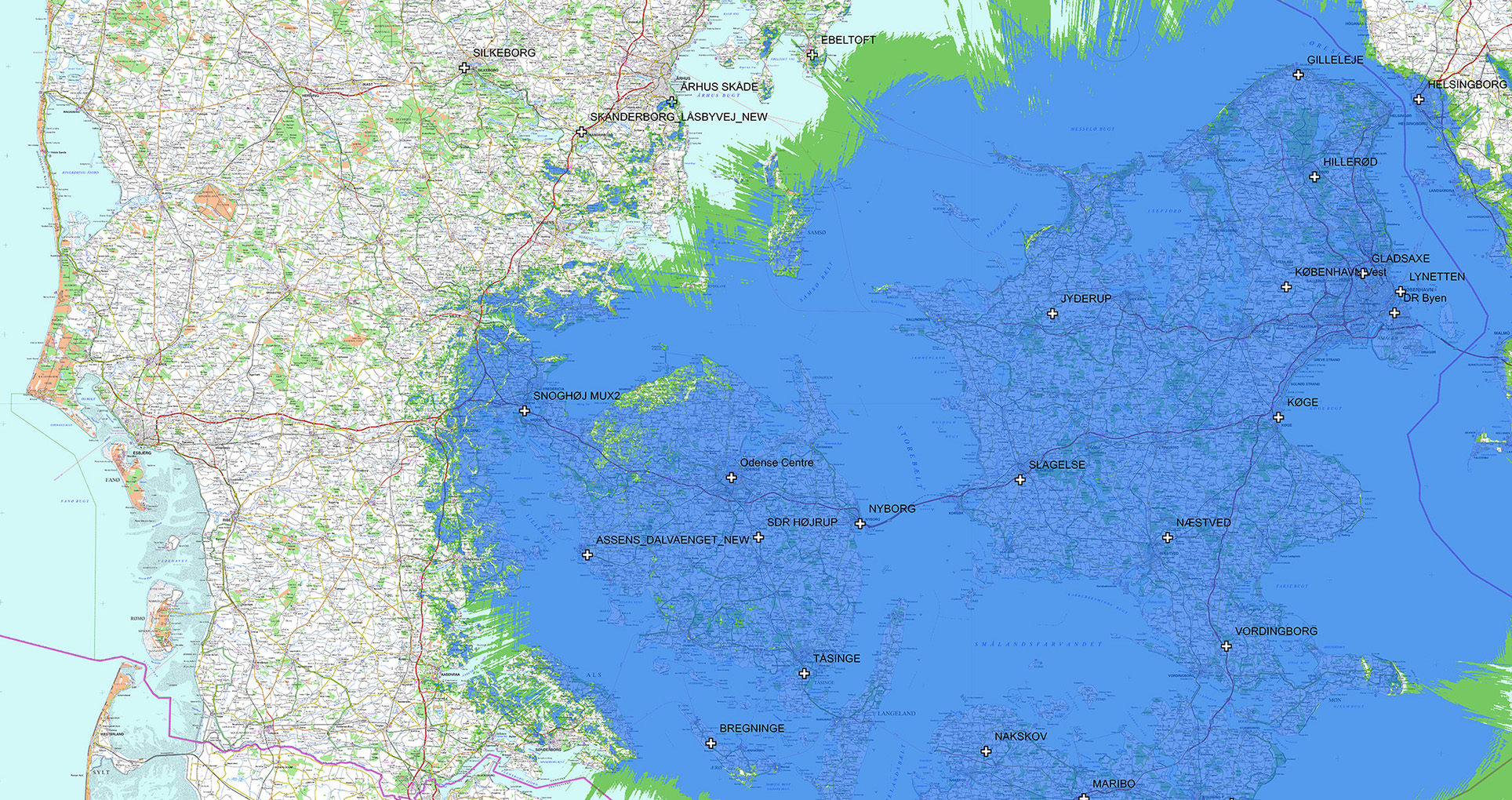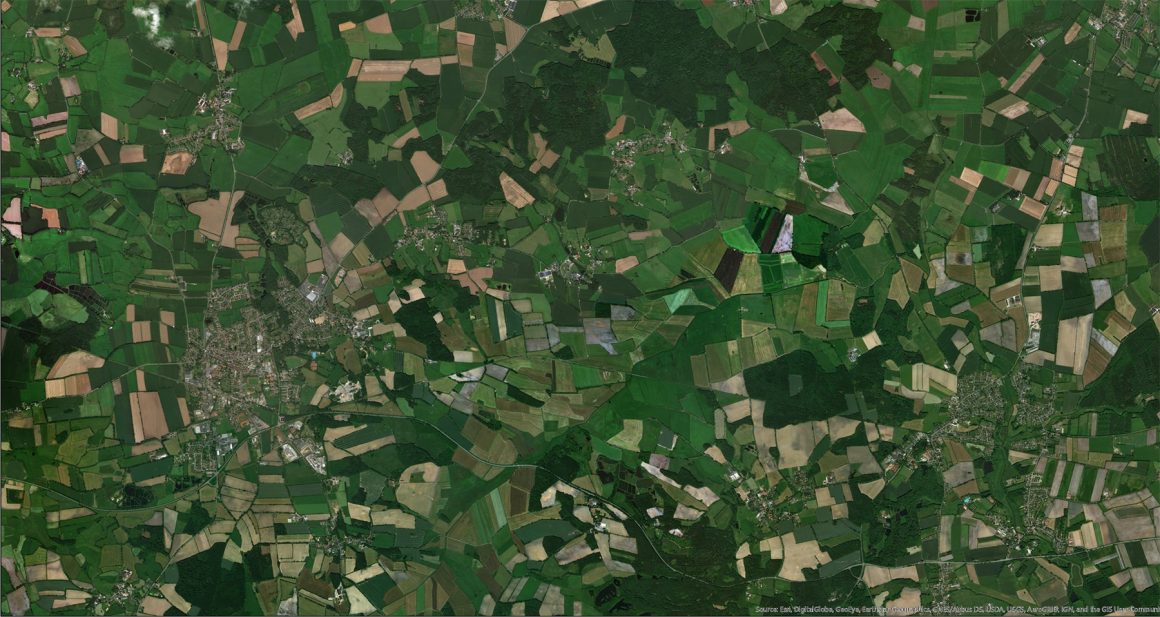Is Increasing Network Coverage with Reduced Transmitter Sites a Mission Impossible?
Background:
DR, previously known as Denmarks Radio, is an independent, public service broadcaster providing television, radio, and online services nationwide. Founded in 1925, it is also Denmark’s oldest and largest electronic media enterprise. They broadcast services throughout the country, free-to-air, via solely digital terrestrial transmissions. Currently, they operate six television channels distributed via a nationwide DVB-T network, and eight radio channels distributed on DAB+ network.
Client’s Challenge:
DR’s DAB network consists of 3 different single frequency networks (SFN) using different frequencies. They were investigating potential strategies to reduce the costs of infrastructure yet maintain or potentially improve their networks’ coverage to Denmark’s population. It may sound like two contradicting goals and a challenge impossible to be resolved. Nevertheless, we offer the necessary solutions to help DR make the right decisions to their networks and achieve their goals.
The Approach:
Increasing the number of transmitter sites can undoubtedly boost the coverage of your networks. Nevertheless, it is also a sure-fire way to increase the cost of your infrastructure unreservedly. At that time, DR was utilizing a medium power, medium tower (MPMT) network architecture for the transmission of DAB signals. The higher the antenna height, the larger the networks’ coverage area. Since High Power Higher Tower (HPHT) delivers broadcast services on high power transmissions from tall towers and masts, it can provide audiovisual content to many receivers spread over a large geographical area simultaneously. With HPHT, a lesser number of transmitters can be used to cover large areas and populations. Therefore, DR wanted to explore the potential of migrating to an HPHT network architecture to achieve cost reductions in infrastructure and coverage requirements. We helped DR conduct a feasibility study of using an HPHT network by adopting both a cost, as well as a coverage perspective.
There are additional considerations in the investigation of a possible migration to HPHT network architecture. One, an HPHT network would increase the risk of exceeding agreed interference levels into neighbouring countries. Two, there is an increased risk of SFN self-interference due to signal delays exceeding the guard interval. It was necessary to keep these risks on the check. New antenna designs at some stations may be required at some stations to mitigate any negative impact caused by the migration.
We sought to help DR in 2 phases:
Phase I: Evaluate the existing MPMT DAB network
We analyzed the existing MPMT DAB network in terms of coverage and interference to identify areas where improvements were needed. Next, we identify additional Low Power transmitters and Medium Power transmitter sites required to achieve the target of an indoor coverage of 99%. A CAPEX and OPEC cost analysis were conducted on the extended MPMT DAB network.
Phase2: Bringing HPHT design in the mix
It seems unrealistic to replace all MPHT transmitters by HPHT transmitters, for two reasons:
- Full migration from the existing network would be costly, complicated, and disruptive to ongoing services to clients.
- Interference levels to neighbouring countries would exceed the permitted level
Therefore, we sought to redesign a network that mixes MPMT and HPHT network topology. To achieve that, we investigate the best way to deploy a few new HPHT transmitters where they would serve a larger area, and replace some existing transmitters. While analyzing the various sites which can be replaced with an HPHT design, we maintain the population coverage goals of at least 99%. Antenna redesigns were also carried out by Arquiva (UK) to reconcile issues from excessive interference levels to neighbouring countries and SFN self-interference.
Finally, a cost analysis was performed internally by DR to assess the feasibility of introducing HPHT sites to their network.
Results:
We evaluated DR’s DAB SFN existing network with MPMT network architecture and recommended MPMT and LPLT sites required to be added in the network to achieve 99.5% of indoor coverage. Then, we redesigned a network which mixes both MPMT and HPHT network architecture. A cost analysis which compared the two network designs we proposed (MPMT + LPLT vs MPMT + HPHT), revealed that a mixed network design of MPMT and HPHT was more cost-efficient in terms of CAPEX and OPEX. Thus, a decision to migrate to the “new” DAB network with MPMT and HPHT sites was made and is currently in progress. The switchover will be completed beginning of 2020.

Impact:
The redesign of the network entails to the closing of a few stations and adding of new ones. DR has also adopted redesigns to their antennas. The changes form the migration calls for a need to optimize the DAB SFN with PROGIRA plan further, to minimize SFN self-interference. This is essential, as the use of HPHT in their new network design increases the risk of self- interference.
Let’s Talk
Ready to extend your network coverage? Contact us by clicking below.

